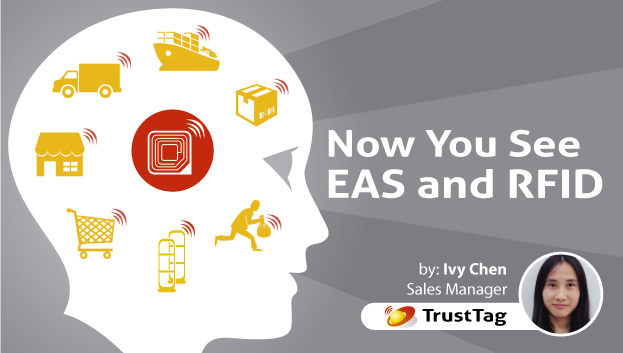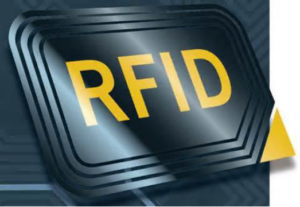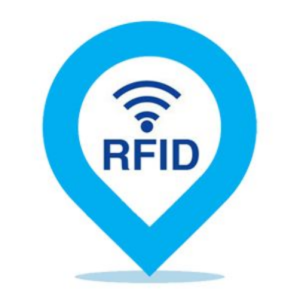RFID, which is the abbreviation of Radio Frequency Identification, is an automatic identification technology widely used in logistics, retail, library, traffic, asset management, animal identification, etc.
RFID consists of the tag, the reader and the antenna. Tag is made up of the coupling element and the chip. The most important point is that every each tag has its own unique EPC(Electronic Product Code). The RFID reader can be hand-held or fixed device. The antenna plays a role of being a transmitter who transmits the signals between the tag and the reader.
So how RFID works? Actually it’s not so complicated. When the tag enter into the magnetic field, it receives the radiation signals from the reader. Based on the energy the tag obtains from the induced current, and then it sends out the chip information which has been stored inside the chip. This is about the passive tag. Another way is that the tag can sends out the signals actively, which is for the active tag. After the tag sends out the signals to the reader, the reader decodes the chip information to the central information system for the data.
As we introduce at the beginning, the RFID technology has been and will be used more and more popular in logistics, retail, library, traffic, asset management, animal identification and varieties of other fields. What’s the advantages make RFID so popular and practical in a great number of fields? Usually, people compare RFID with the traditional barcode since both of them are use for tracking the things in a fast and accurate way. But RFID shares more advantages than the traditional barcode from the below aspects:
- Fast scanning
Only one barcode can be scanned at one time. However, the RFID reader can identify many RFID tags at one time.
- Anti-stain and Wear resistance
The traditional barcode is on the paper so it’s to be stained by water or oil. RFID has well resistance to those things. Besides, RFID is not easy to be damaged as it runs in a ways of writing the data into the chips.
- Being reusable
The RFID tag can be added, modified or deleted for many times with large memory.
- Penetrability
RFID can identify the tag through paper or plastic or other non-metal materials while the barcode can only be identified only when there is no blocking.
- Safety
The RFID chips are loaded with electronic information and they are protected by code so the chip information are difficult to be altered.
RFID technology helps to effectively increase the efficiency of goods management, information management and logistics management especially in retail industry, let’s see!



No comments:
Post a Comment